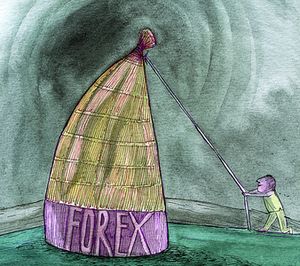Diplomacy is one profession where statements are made carefully, especially if it involves intruding into other ministerial domains. But Sanjay Bhattacharyya—the secretary in the external affairs ministry, who has been coordinating Mission Vande Bharat—has tweeted something which should evoke interest in the finance ministry and the Reserve Bank of India. Bhattacharyya, who has served as ambassador in countries such as Turkey and Egypt, looked at one of the major positives of the Covid-19 crisis—India’s foreign exchange reserves hitting the $500 billion mark. In early January, it was $461 billion.
Bhattacharyya wonders whether this is “too high” and feels it is time to reconsider the optimal reserve level, and capitalise the excess. Ever since foreign reserves started growing after the economic reforms of 1991, there has been questions whether these funds should sit idle with the Reserve Bank or can be used to meet government expenditure. Successive finance ministers have considered using it, but Reserve Bank governors and economists have consistently argued against tinkering with the funds. They said that the reserves are a hedge against currency manipulation and sudden surge in imports, while being a morale booster to attract both long-term and short-term investment.
There were also suggestions that the reserves should be used to pay off the huge foreign debts. But, it has been pointed out that these loans, procured at low interest rates with long repayment periods, need not be paid in a hurry, even though there is a substantial interest burden on the budget every year. Economists argue that the country has a huge import bill due to the dependence on oil imports and needs to maintain a more than adequate reserve, especially if there is a sharp drop in exports like during the pandemic.
But cashing even 20 per cent of the reserves would release Rs 6.5 lakh crore to meet the ever growing hunger of the Central and state governments. In 2018, the Narendra Modi government asked the Reserve Bank to transfer more than Rs 3 lakh crore of its reserves. The Central bank’s governors Raghuram Rajan and Urjit Patel had resisted the idea, but it happened after a committee led by former governor Bimal Jalan studied the surplus and made a detailed recommendation. The money went into the consolidated fund, helping the government to reduce the fiscal deficit.
The finance ministry is happy that the flow of foreign institutional investments (FII) into the stock and other markets has not suffered because of the global economic crisis; India is still considered a reasonable country to invest in. The government is also anticipating that the reforms announced as part of the Rs 20 lakh crore economic stimulus package, like opening up defence, space, agriculture, coal and mining for foreign investments, would fetch more long-term foreign direct investment. FDI is less prone to be withdrawn compared with FII which come into the markets. The information technology ministry is also expecting a Rs 1 lakh crore investment into the electronics industry under the new scheme approved by the cabinet to go for self reliance in the hardware sector.
But there are economists who point out that the reserves may not stay at $500 billion, as payments are released towards pending import bills and imports shoot up post the current crisis. Thus they want to look at the actual position of balance of payments between imports and exports before any move is made to use even a small portion of the foreign exchange reserves. However, if the economic slowdown persists longer, Bhattacharyya’s suggestion may merit urgent consideration by a government in dire need of funds.
sachi@theweek.in


